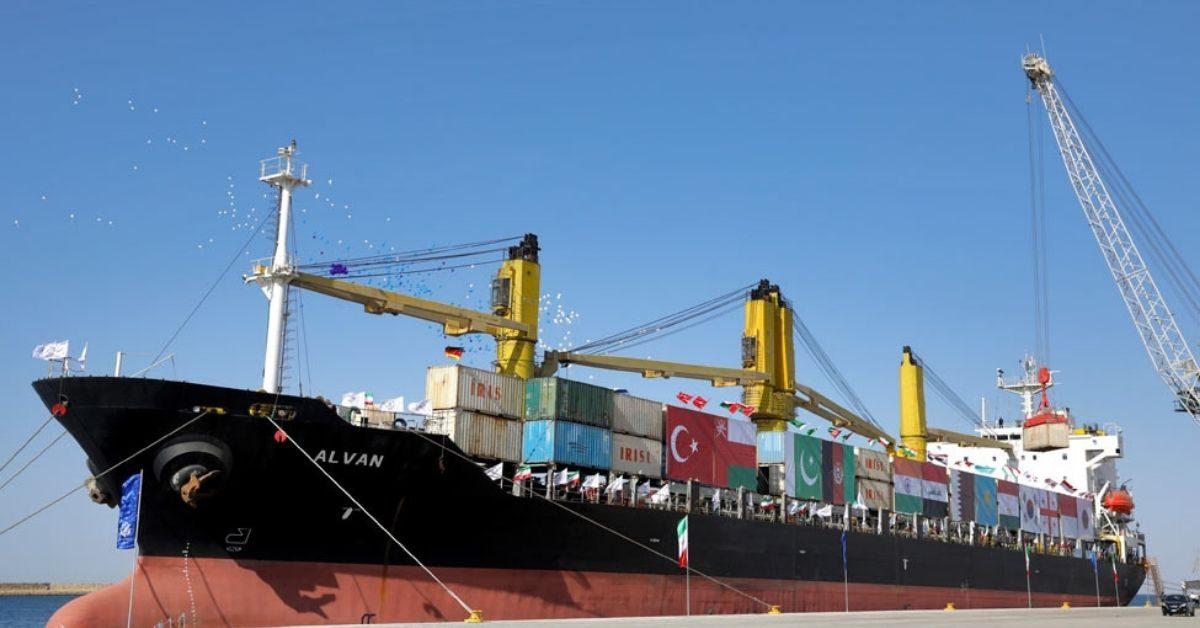The Chabahar Port has emerged as a silver lining for Iran as the port is located at an ideal strategic location connecting the Indian subcontinent with both Afghanistan as well as Central Asian countries such as Kyrgyzstan and Uzbekistan to emerge as a hub of regional trade through promoting maritime trading operations.
The Chabahar Port has emerged as a silver lining for Iran as the port is located at an ideal strategic location connecting the Indian subcontinent with both Afghanistan as well as Central Asian countries such as Kyrgyzstan and Uzbekistan to emerge as a hub of regional trade through promoting maritime trading operations.
Since the Ebrahim Raisi administration took over, Iran’s policy has been a “Pivot to the East,” reported policy research group, Poreg.
Supreme Leader, Ayatollah Khomeini has succinctly put, Iran’s policy thus, “We are preferring the East to the West and neighbouring countries to remote ones.”
Moreover, Iran acceded to the Shanghai Cooperation Organization (SCO) after 15 years as an observer, a Eurasian regional body on September 16, 2022 – a diplomatic triumph for Iran. It demonstrated Tehran’s commitment to Asian multilateralism, reported Poreg.
Besides playing a key role in the International North-South Transport Corridor (INSTC) as an economic hub, Iran provides SCO members with secure and stable transport routes and is committed to further infrastructure development, particularly on the strategically important Chabahar Port, reported Poreg.
It is against this backdrop, the June 10 announcement of foreign minister, Hossein Amir-Abdollahian that India and Iran had agreed upon further investments in the Chabahar Port becomes significant.
Both countries have also agreed upon banking mechanisms for the facilitation of trade. Trade in Indian Rupees is also on the agenda, reported Poreg.
Primarily, the focus is to expand Chabahar’s infrastructure and capacity further to meet the trade volumes expected from the North-South Corridor with a surge in India – Russia trade.
Historically, India and Russia have maintained a relatively subdued volume of trade despite sharing a constructive and cordial relationship. This was because of the logistical and financial problems associated with the transport of cargo between the region.
The emergence of Chabahar Port has generated a solution to some of these issues; the route provides a 40 per cent reduction in transport time and a 30 per cent cut in logistical costs. Moreover, Chabahar boasts superior storage and docking capacity compared to Bandar Abbas port, also in Iran, reported Poreg.
With a new pipeline and upgraded port facilities on the Southern Coast bordering the Gulf of Oman, Iran has decoupled its oil exports from dependency on the Strait of Hormuz.
This capability is integral to Iran’s long-term strategy for mitigating and bypassing the impact of the United States-led sanctions that have for long crippled its economy and constricted its strategic leverage, reported Poreg.
In the wake of the ongoing conflict in Ukraine, Russia is reorienting its trading strategy with a view to encouraging regional trade with SCO members. Tensions with Europe have culminated in Russia dramatically increasing its volume of trade with India in fertilizers, oil and coal.
These developments have benefited Iran creating the prospect of sustaining revenue from taxes on trade through the INSTC and income from the Chabahar Port, reported Poreg.
The emergence of a regional consensus on developing INSTC would be a step towards cementing Iran as a regional trading hub. It would boost trading revenues as well as provide much-needed geopolitical security.







